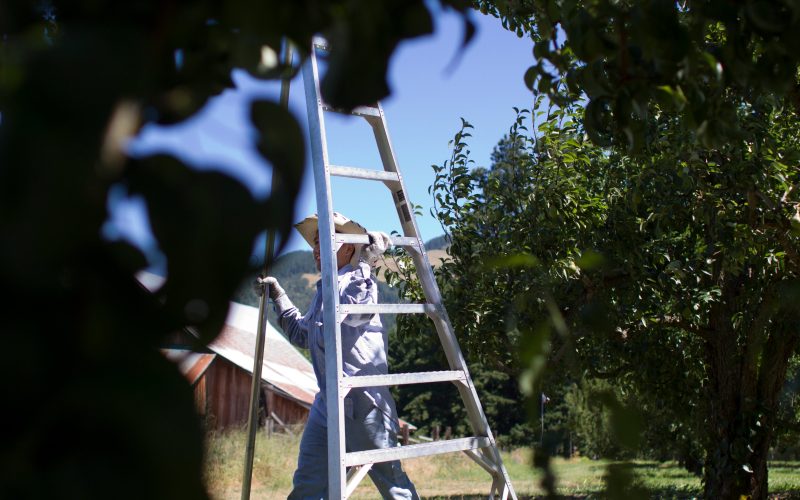According to a recent review of farm payroll data by agricultural economists at Oregon State University, certain farmworkers in Oregon are making more money per hour but taking home less money overall than they were prior to the state’s 2022 agricultural overtime rule.
According to Tim Delbridge and Jeff Reimer, Oregon State economists who carried out the analysis and posted it on their blog on January 31, it’s probably the effect of farmers cutting back on some employees’ hours in order to avoid paying overtime.
Farmworkers have reported improved working conditions and a higher standard of living since the agricultural overtime law was passed, according to supporters of the bill. The analysis doesn’t really alter our position, according to Reyna Lopez, executive director of the farmworkers’ organization Pineros y Campesinos Unidos del Noroeste, or PCUN.
“It’s still about the same thing for us,” she stated. They should receive the same compensation as everyone else if they are going to be providing for families throughout Oregon while performing this crucial, challenging, and hazardous work in one of the biggest industries in our economy.
Many farm owners and industry associations are among the law’s opponents, who claim that it will continue to impose onerous costs on small farms and growers of seasonal crops, leading them to either close or combine in the coming years. They claim that the rule, which is being implemented gradually over five years and increased overtime compensation from a 55-hour threshold to 48 hours this year, will also result in less farmworker hours and incomes. After 40 hours, overtime will be earned and compensated in 2027.
The issue that growers deal with is that they are price takers. They have no say in how much their commodity costs. The commodity’s pricing is set by big grocery stores like Walmart and Fred Meyer. According to Mike Doke, executive director of the Hood River-based business association Columbia Gorge Fruit Growers, growers have no control over that. Some producers are going out of business because they are unable to compensate for the higher regulatory expenditures associated with overtime and labor housing.
The Oregon Association of Nurseries, Oregon Dairy Farmers, Oregon Farm Bureau, and the Oregon State University agricultural extension were among the industry organizations that contributed to the funding of Delbridge and Reimer’s study, as were the Columbia Gorge Fruit Growers. In order to accommodate the harvest season for seasonal fruit growers, the groups are thinking of requesting that the Legislature make exceptions to the overtime regulations. These would include capping overtime at 48 hours rather than 40 hours and establishing a three-month window during which it would be capped at 55 hours.
Since the state passed House Bill 4002 in 2022, which mandates that agricultural workers receive time-and-a-half compensation for overtime labor over a five-year period, Delbridge and Reimer have gathered anonymized payroll data from five dairies, three nurseries, and two cherry farms in Oregon.
After California and Washington, Oregon became the third state in the union to enact legislation pertaining to agricultural overtime. Farmworkers are not covered by the federal Fair Labor Standards Act, which has guaranteed overtime pay to workers in other industries for more than 80 years. California and Washington have now completely implemented a 40-hour weekly requirement for overtime compensation.
Delbridge and Reimer discovered that, similar to research on California’s agricultural labor force, overtime regulations in Oregon have been raising hourly pay since 2022, but at the expense of modest declines in average yearly earnings and hours. According to data from the U.S. Department of Agriculture, the average weekly hours worked by farm workers in California fell short of the national average, which is approximately 41 hours.
For instance, the economists examined data from five workers at a dairy farm in Oregon who, on average, put in over 55 hours a week in 2022. Their weekly salaries dropped by an average of $75 by 2023, and their average weekly hours dropped by almost six hours.
According to Lopez of PCUN, farmworkers are more concerned about severe weather than they are about their hours being reduced by overtime regulations.
She stated, “I’ve been hearing a lot from my members, and that’s been on their minds. What they’ve seen is that the impacts of extreme climate and environmental conditions are really what’s causing them to reduce their hours.”
Employee overtime hours were not decreased by all farm managers who supplied data for the analysis. However, a few farmers who took part reported that they instead cut year-end bonuses or felt less pressure to increase base pay for overtime workers.
The dairies’ labor expenditures increased by an average of 3.6% at 55 hours of overtime. According to analysts, labor expenses for dairies would climb by around 7% this year as overtime approaches the 48-hour threshold and by almost 12% at 40 hours compared to years before the overtime rule was passed. With 4% labor cost increases by the 2027, 40-hour threshold, nurseries are somewhat less affected. According to the analysts, cherry growers would experience a 3.3% increase this year and a 6.3% increase in 2027.
Farmers clearly suffer financially from overtime regulations, but workers are left in the dark. Dembridge stated, “I don’t think it’s true that all workers will be worse off, but some workers will be worse off because of the overtime.”
Farm consolidation is one unforeseen consequence of the overtime rule, according to Delbridge, but it is more likely to occur at the 40-hour mark than the 55- or 48-hour mark.
55 hours hasn’t had much of an impact, has it? “And the data shows that,” he continued. What you’re hearing right now, in my opinion, is more anxiety about what will occur this year at 48 hours and how on earth we’re going to manage to complete this at 40 hours. simply because it represents a significant departure from the existing quo.
He said that new agricultural labor housing regulations and agricultural overtime legislation, which will take effect in 2027, make it simpler for big farms to manage the financial risks involved. By hiring more staff, large agriculture businesses can avoid paying overtime. In addition to having a human resources manager or department that can handle hiring paperwork and training, they may already have large housing facilities for those extra workers, or they may have the funds to invest in them. For a tiny farm, those are substantial costs.
Doke described the new housing restrictions and the 2027 agricultural overtime threshold of 40 hours as a “perfect storm” of unaffordable costs for small farms. He thinks that Oregon’s future is similar to that of Washington right now.
There aren’t as many little apple growers in Washington as there were twenty years ago. “We really want to avoid that here in Oregon, because it’s mostly larger corporations,” he said. We now have 440 farmers in our membership in Hood River and Wasco County. The industry and local communities would be greatly impacted if they were to combine into fewer than 100, and that is what we will ultimately witness as smaller farmers simply cannot afford these exorbitant costs.
According to Lopez of PCUN, overtime compensation is necessary to maintain a workforce that farmers claim they require but find difficult to locate. President Donald Trump’s draconian immigration policies and threats of mass deportations will only make things more difficult, she added.
They have repeatedly stated that the lack of workers is a problem for them, and she indicated that we are now in an era where that problem would only get worse. I sincerely hope they can grasp the wider picture of why it’s critical to enhance working conditions for our employees.
— Oregon Capital Chronicle’s Alex Baumhardt
The largest state-focused nonprofit news agency in the country, States Newsroom, includes Oregon Capital Chronicle.










